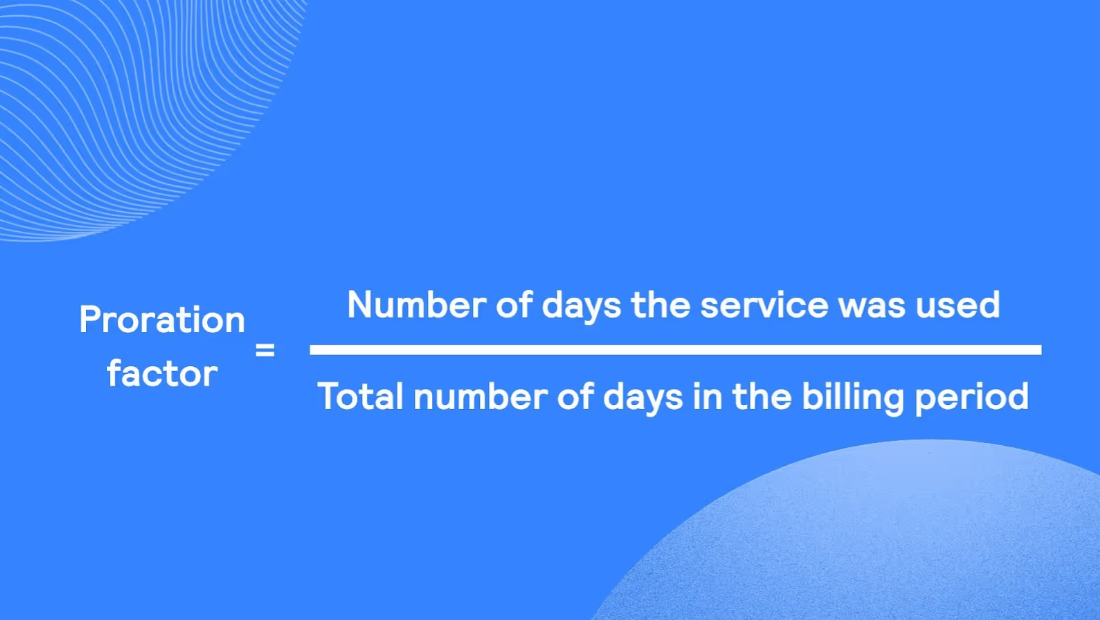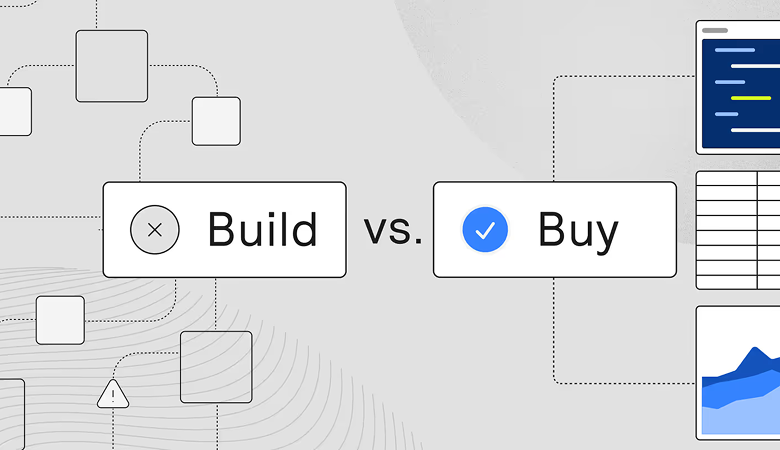SaaS billing gets tricky when customers change plans mid-cycle. This article walks through what proration is and how platforms handle adjustments automatically to keep revenue accurate and customers happy.
The short answer: What is proration?
Proration is proportional billing for partial time or usage within a billing cycle. You charge or credit only for what the customer used.
Accountants and utilities have used proration for decades. SaaS teams now use it for subscriptions and usage fees to keep prorated invoices fair and simple.
Key takeaways that define proration:
- Proration meaning: Charge for the exact time or usage within a billing period.
- Proration period: The slice of the cycle you bill or credit.
- Proration amount: The dollar value you charge or credit for that slice.
What is a prorated charge?
A prorated charge is the partial-period price you add when a customer uses more than planned or moves to a higher plan mid-cycle. You calculate it with the proration factor (time or usage fraction) and apply it to the standard price.
Many teams pair a prorated credit for the unused portion of the prior plan with the new prorated charge so the customer sees a fair net change on the prorated invoice.
Proration vs. Full-cycle charges
Here’s a quick contrast between the two:
- Full-cycle charge: One price for the whole period when nothing changes.
- Prorated billing: An adjusted proration amount for partial time or usage when something changes (plan, seats, or thresholds).
What does proration mean for SaaS enterprises?
For SaaS with monthly/annual subscriptions, proration charges customers for the precise service portion used, especially with mid-cycle changes. It guarantees fair billing. SaaS companies need proration because:
- Mid-cycle changes happen. Customers upgrade, downgrade, or cancel before a cycle ends.
- Seats change often. Teams add or remove users mid-month.
- Usage varies. Customers cross thresholds or use more resources late in the period.
This approach creates a prorated subscription model where customers always pay for the portion of the service they actually used.
Note: Want a deeper dive into how consumption billing applies to SaaS firms? Read our consumption billing guide.
How proration works in SaaS
Proration divides a billing cycle into parts and adjusts the price based on time or usage. The goal is to make sure every customer pays or receives credit for exactly what they used. This results in a prorated subscription setup that keeps recurring billing transparent and fair.
Below are the most common situations where SaaS companies rely on proration.
Plan upgrades and downgrades mid-cycle
When a customer upgrades mid-cycle, you charge for the old plan up to the switch date. Then, you charge the new plan for the remaining days.
If they downgrade, you credit the unused portion of the higher plan and bill the lower plan for the rest of the period. This keeps billing accurate and fair for every plan change.
Seat-based changes
SaaS products that price per seat use proration whenever the number of users changes during a cycle. If a team adds new seats, the system charges each added seat for the remaining days in the month.
If the customer removes seats, it applies a credit for the unused time. That way, customers pay only for the seats they actually use during the billing period.
Usage-based thresholds
Some products bill based on usage tiers or limits. When a customer crosses a usage threshold before the cycle ends, proration adjusts the charge.
The first part of the period is billed at the lower rate, and the remaining usage after crossing the threshold is billed at the higher rate. The final proration amount reflects both rates according to the time and usage.
Trials that switch to paid
When a free trial converts to a paid plan, companies can handle the transition in two ways. One option is to start a new billing cycle on the conversion date, which avoids any partial-period math.
The other is to keep the original cycle and charge a prorated amount for the remaining days of the month. Both approaches are valid as long as the billing logic stays consistent.
Note: If you’re thinking about metering and usage tiers, see our usage billing guide.
How is the proration factor calculated?
You calculate the proration amount by first finding the proration factor. The proration factor equals the number of days the service was used divided by the total number of days in the billing period, as shown below:

Then multiply that factor by the full plan price to get the final proration amount. In short:
Proration amount = (days used ÷ days in period) × full price.
Simple example
Use a simple example to check your math. A plan costs $60 in a 30-day month. The customer uses 10 days. The proration amount is 10 ÷ 30 × $60, which equals $20. This shows how the charge reflects the proration period.
Pick the right level of precision for your product. Most teams use days because it is easy to follow on invoices. Some teams use hours when usage is spiky or when accuracy matters for data pipelines. The same formula applies either way because you swap days for hours.
Watch for edge cases so invoices stay correct. Leap years change day counts for annual plans. Mid-month signups and cancellations require exact day totals. Holidays or custom billing calendars can also shift the denominator.
Document these rules and apply them the same way every time to keep prorated invoices clear.
Note: If recurring revenue is your focus next, read our recurring revenue software overview.
Examples of prorated billing in action
While it’s fundamental to know what proration is, examples are key to understanding how it works. This table shows some examples of calculating prorated bills:
Note: Curious about pay-as-you-go and when it makes sense to use it? See our PAYG pricing guide.
How to sidestep proration pain points
Here are common pain points and solutions, including how a flexible billing engine like Orb addresses them.
Pain point: Manual adjustments that don’t scale
Solution: Automate proration calculations using a robust billing system. Relying on manual spreadsheets or custom scripts becomes error-prone and time-consuming as your user base and pricing complexity grow.
A dedicated billing platform handles these calculations automatically for various scenarios like upgrades, downgrades, and mid-cycle changes, providing accuracy and saving considerable operational effort.
Pain point: Hard-coded logic across product and finance
Solution: Centralize proration logic within a dedicated billing engine. Embedding proration rules directly into your product or finance systems creates silos and makes it difficult to update or modify billing policies consistently.
A billing platform acts as a single source of truth for all pricing and proration rules, allowing for easier management and updates without requiring code changes across multiple systems.
Pain point: Billing discrepancies mean a poor customer experience
Solution: Provide transparent and accurate proration with clear invoicing. When customers are confused about prorated charges or believe they've been billed incorrectly, it leads to frustration and potential churn.
A solid billing system that clearly itemizes prorated amounts, explains the calculation, and integrates with customer communication channels helps build trust and provides a positive experience.
Proration period policies
Clear communication prevents billing confusion. SaaS companies should outline how proration applies during the billing cycle so customers know what to expect before a change happens.
The proration period (the specific time used to calculate partial charges or credits) should match the billing logic in your system and appear clearly on every prorated invoice.
A good policy starts with timing. Explain when you apply proration, such as mid-cycle upgrades, downgrades, or seat adjustments. State whether you measure the proration period in days or hours and keep that method consistent across all plans.
Consistency makes your invoices predictable and easy to read.
Transparency also matters. Let customers know if they’ll receive a prorated credit when they downgrade or remove users. Describe how those credits appear on future invoices or are applied to new charges.
Simple examples or short FAQ sections on your pricing page help users understand the math behind their bills.
Clear proration policies reduce support tickets, improve trust, and show customers that your billing process is fair and reliable.
Note: Want to align pricing with the value you deliver? Read our value-based pricing guide.
FAQs
1. What is proration?
Proration is a way to charge or credit for part of a billing period. SaaS teams use proration for mid-cycle plan changes, seat changes, and usage changes.
2. How do I calculate a proration amount?
You multiply (days used ÷ days in period) by the full price. Use hours if you need more accuracy.
3. What is a prorated charge?
A prorated charge is the partial amount you bill when a customer upgrades or uses more than planned during the cycle.
4. What is a prorated credit?
A prorated credit is the refund value of the unused portion of the old plan or seats after a downgrade or removal.
5. What does proration mean on an invoice?
It means the invoice shows partial-period math for charges and credits, often with dates and factors so the customer can follow the logic.
How Orb handles proration
Now you know what proration is, but it’s a lot to manage on your own. Luckily Orb automates proration for mid-cycle changes, seat updates, and usage spikes. Orb RevGraph decouples usage data from pricing logic, so invoices stay accurate as plans evolve. Orb ingests raw event data at scale with high accuracy and provides a full audit trail.
Here’s what you get with Orb:
- Accurate proration from raw events. Orb ingests raw usage events so that you can define your own billable metrics. You get clear, itemized invoices, even when pricing changes mid-cycle.
- Plan changes without rewrites. Use the Orb SQL Editor or a visual editor to define billing metrics and build new pricing plans. Even as you evolve your pricing, invoices are automatically recalculated in order to remain accurate.
- Pricing experiments before launch. Run Orb Simulations on historical data to preview revenue and usage outcomes. Business teams make more informed decisions, faster.
- Data you can trust across systems. Direct integrations help keep your usage and revenue data in sync across your stack.
Ready to experience automated and accurate proration? Explore our flexible pricing options to find the plan that best suits your business needs. Get the most out of your usage data with Orb's billing platform.



